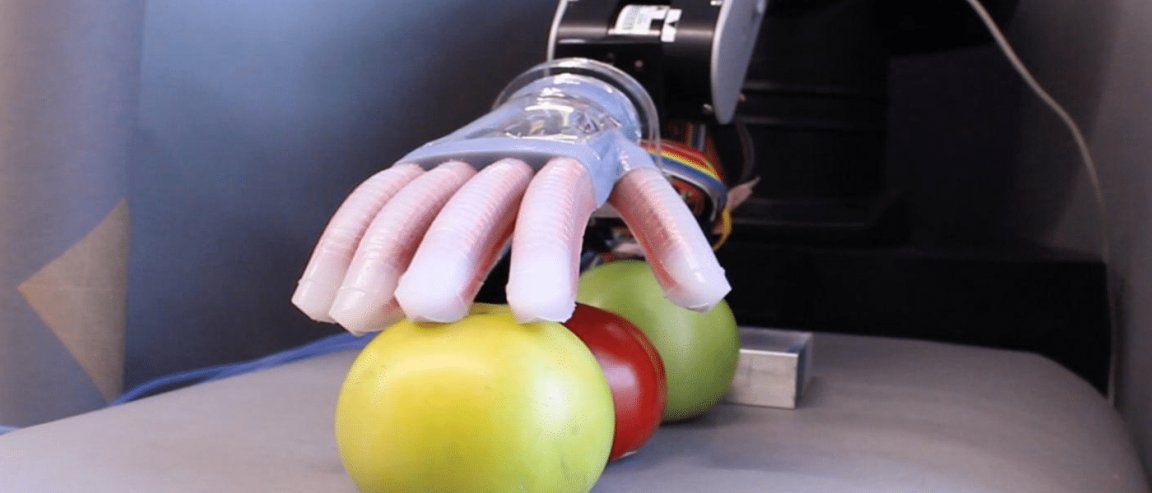
Researchers from Cornell University discovered a new way to give robots a (figurative) sense of touch, allowing robots to handle delicate items, and giving them the capability to sense shape and texture internally.
Traditionally, robot hands needed to be made of materials that could conduct electricity. “Gentle Bot,” uses optical waveguides—basically using light to sense surroundings instead.
This is key to measuring curvature, pressure, and elongation internally. Inside the Gentle Bot’s fingers are pliable pipes that carry waves—these are the waveguides. When the entire hand comes into contact with an object, the waveguides bend and distort the light signals, allowing the hand to move along with the fingers. These changes deliver data on whatever the hand is touching, allowing the robot to mimic human touch more than any prosthesis or mechanical limb, to date.

While optical waveguides have been available since the 70s, manufacturing them was an expensive and complicated process. However, the accessibility of soft lithography and 3D printing today allows for easier development of technology that can be used in soft robotic applications.
Gentle Bot’s potential in the field of prostheses is evident, not to mention its commercial, medical, and manufacturing applications. But a grander vision of creating bio-inspired robots is being eyed by its creators. This could be the basis for the development of bio-inspired robots that could be sent to explore the furthest reaches of space in ways that humans could not.